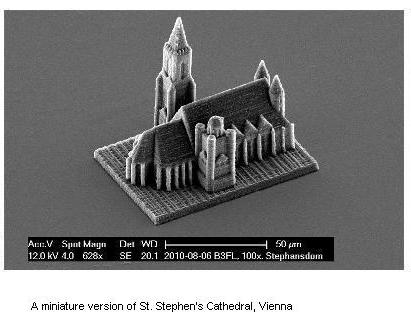A research team from the Vienna University of Technology (TU Vienna) has increased the speed of two-photon lithography technology, which allows the fabrication of nanoscale structures by printing 3D objects with remarkably fine details.

TU Vienna’s high-precision-3D-printer is several times quicker than similar instruments, paving the way for entirely new fields of application, like in medicine. Professor Jürgen Stampfl from the TU Vienna’s Institute of Materials Science and Technology informed that the 3D-printer’s printing speed is 5 m/s, a world record in two-photon lithography.
The 3D printer utilizes a liquid resin, which creates a hardened solid polymer line having a width of a few hundred nanometers. This resin is hardened accurately at the exact spots using a focused laser beam, whose focal point is guided via the resin by movable mirrors. This fine resolution allows the fabrication of intricate nano-scale structures. The mirrors constantly move during the printing process. Fine tuning of the acceleration and deceleration periods produces high-resolution results at a world-record speed. The special resin’s ingredients were developed by a research team headed by Professor Robert Liska from TU Vienna.
High speed fabrication of race car
Jan Torgersen from TU Vienna stated that the laser light activates initiator molecules in the resin. These molecules convert the monomers of the resin into a solid by activating a chain reaction. To get activated, these initiator molecules have to absorb the laser beam’s two photons at once, which can occur only at the beam’s center as it has the highest intensity.
Unlike traditional 3D-printing methods, TU Vienna’s 3D printer creates solid material anyplace within the resin, eliminating the preparation of the working surface prior to the creation of the next layer, which in turn saves considerable time. The novel printer allows the creation of larger objects within a specific period of time, thanks to the world-record printing speed. It may be used for producing customized construction parts for nanotechnology or biomedical technology.